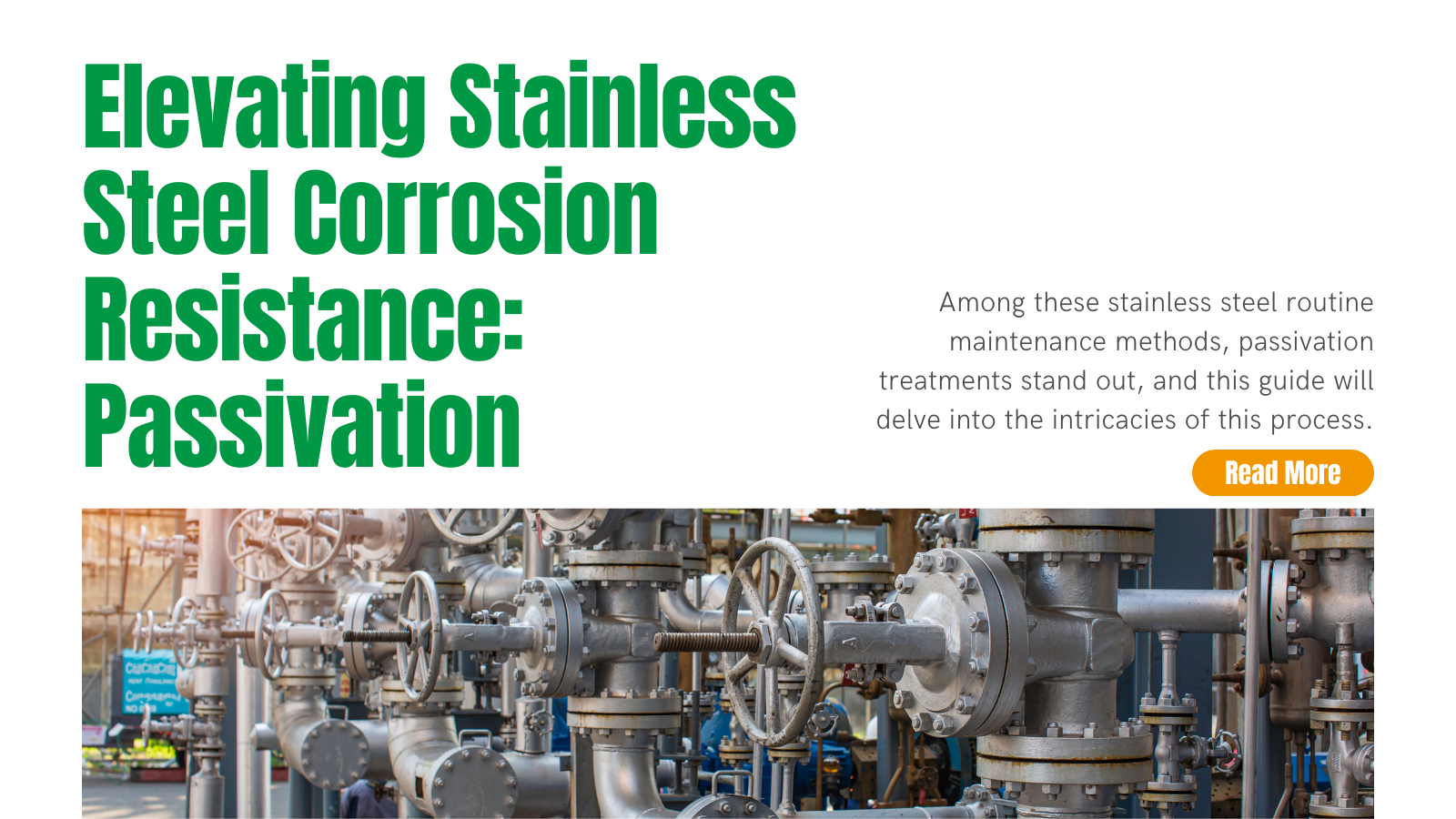Elevating Stainless Steel Corrosion Resistance: Passivation

Enhancing the durability and corrosion resistance of stainless steel involves more than just routine maintenance. Advanced treatments, particularly in machining and fabrication settings, play a pivotal role. Among these methods, passivation treatments stand out, and this guide will delve into the intricacies of this process.
Understanding Passivation: A Shield for Stainless Steel
Passivation revolves around optimizing the natural formation of a thin chromium oxide layer—the hallmark of stainless steel's corrosion resistance. This layer forms when steel surfaces interact with oxygen. However, in the presence of dirt or damage, the natural formation of this oxide layer can be impeded. Passivation treatments not only encourage the natural formation of this layer but also enhance corrosion resistance by addressing various factors.
One crucial aspect is the reduction of free iron introduced during machining or environmental exposure. For stainless steel with sulfides, common in machining grades, passivation helps minimize exposed sulfides that can become potential sites for corrosion initiation and spread.
Methods and Products in Passivation
Passivation treatments predominantly use acids, such as nitric and citric acids, at varying temperatures and concentrations. The choice of method depends on the steel grade, and specific considerations are made for free-machining grades.
The American Society for Testing and Materials (ASTM) provides standards related to passivation, offering guidance on practices, specifications, and chemical treatments. The exact parameters, including submersion time, temperatures, and chemicals, vary based on the steel grade.
Here's a brief overview of passivation methods for different steel grades:
High-Chromium Steels (17% or More Chromium Content):
- Clean and rinse thoroughly.
- Submerge in a 20% nitric acid bath (120F to 140F).
- Rinse thoroughly and dry.
Straight Chromium (12-14%), High Carbon/High Chromium, and Precipitation Hardening Steels:
- Clean and rinse thoroughl.
- Submerge in a 20% nitric acid bath with sodium dichromate (120F to 140F) or use a 50% nitric acid solution.
- Rinse thoroughly and dry.
Free Machining and High-Sulfur Steel Grades:
- Clean and degrease using a sodium hydroxide solution.
- Rinse and passivate using 20% nitric acid with Sodium Dichromate or citric acid.
- Rinse and neutralize with a sodium hydroxide bath.
- Thoroughly rinse and dry.
Critical Considerations in Passivation:
- Avoid chlorides in passivation baths: Chlorides can lead to a flash attack, resulting in a darkened and etched surface.
- Monitor acid baths: Use titration to ensure proper chemical concentrations and contaminants are within tolerance.
- Maintain baths: Regular replacement routines are essential to prevent contamination.
- Avoid mixing grades: Keep different grades separate during passivation.
- Prevent metal-to-metal contact: Use racks or containers to ensure even submersion.
A Word of Caution and a Call to Precision:
Passivation is a valuable option for fortifying stainless steel against corrosion, but precision is paramount. Always follow safety protocols, consult professionals, and consider specific requirements related to steel grades, usage environments, and other variables before proceeding with passivation treatments.
INOX-TEK: Your Stainless Steel Solution Partner:
With over years of expertise, INOX-TEK is your trusted partner for stainless steel needs in worldwide. Contact us today to explore tailored solutions for your equipment, fabrication, storage, or manufacturing requirements.
